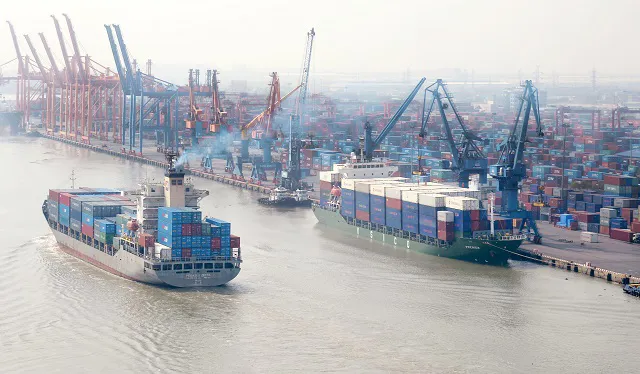CPTPP helps local enterprises mitigate Covid-19 impacts
Local firms are taking advantage of opportunities from the deal at a time when trading activities are struggling with Covid-19 impacts.
Despite the severe Covid-19 pandemic, Vietnam recorded a trade surplus of over US$1.44 billion to six markets in the Comprehensive and Progressive Agreement for Trans-Pacific Partnership (CPTPP), including the likes of Chile, Peru, or Australia during the eight-month period.
“This is a positive signal showing local firms are taking advantage of opportunities from the deal at a time when trading activities are struggling with Covid-19 impacts,” said Nguyen Cam Trang, deputy director of the Ministry of Industry and Trade’s (MoIT) Agency for Foreign Trade.
“Vietnam key export products to CPTPP markets mainly focus on garments, footwear, or furniture,” Trang added, noting Mexico and Canada in the CPTPP are the two markets having a first-ever free trade deal with Vietnam.
According to Trang, with a deep tariff cut of up to 94.9% of tax rates, the CPTPP would bring huge benefits for local companies, especially with huge demand from large markets such as Mexico or Canada.
Statistics from the MoIT revealed for the first seven months of 2021, Vietnam recorded a trade turnover of US$52 billion with the other 10 members of the CPTPP, a surge of 23.36% year-on-year.
| Haiphong Port. Photo: Cong Hung |
The figure was equivalent to 13.86% of Vietnam’s total trade revenue during the period and stayed lower than the 14.71% rate recorded in the same period last year as the pandemic exerted its impacts on the global economy, the Ministry of Industry and Trade (MoIT) stated in a report.
In July, Vietnam’s two-way trade turnover within the CPTPP sharply rose by 22.6% year-on-year to $7.9 billion, making the country’s surplus with the markets $59 million, down 22.58% year-on-year.
“While Vietnam’s exports to markets such as Japan, Singapore, Canada, or Malaysia have been on the decline, the shipments to Chile, Peru, and Australia are on the rise,” noted the MoIT.
According to the ministry, Vietnam’s trade performance with the 10 CPTPP members has improved against the same period of last year, thanks to strong demand for the country’s major export staples such as equipment, machinery, phones, and parts.
In return, Vietnam imported goods worth $26 billion from CPTPP economies during the January-July period, up 24.21% year-on-year and 13.75% of the country’s total imports. This resulted in a trade surplus of $86.28 million with the CPTPP markets in the seven-month period, down 76% year-on-year.
The CPTPP, seen as a next-generation trade agreement, was signed by 11 countries in 2018, including Vietnam, Singapore, Brunei, Malaysia, Japan, Australia, New Zealand, Canada, Peru, Mexico, and Chile.
The deal covers a large market of 495 million people and contributes 13.5% of global GDP, generating a combined trade turnover of over $10 trillion. The UK and China have recently applied to join the deal.












